By clicking a retailer link you consent to third-party cookies that track your onward journey. This enables W? to receive an affiliate commission if you make a purchase, which supports our mission to be the UK's consumer champion.
Best binoculars 2025: for bird watching, stargazing and more
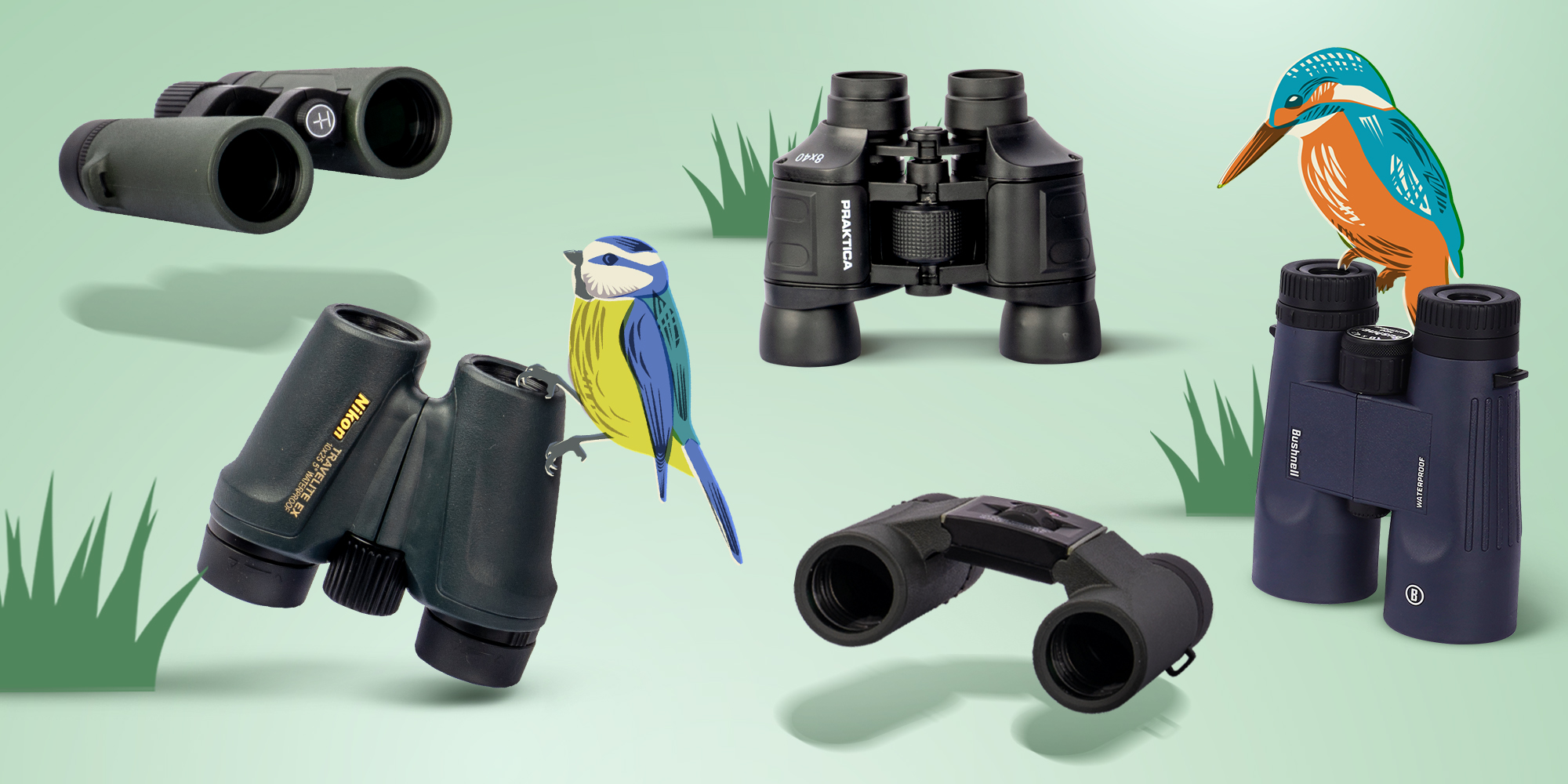
The best binoculars will give you crisp and clear views of nature, whether you're birdwatching, stargazing or navigating.
Some pairs of binoculars can cost upwards of £1,000, but we've found cheaper binoculars for around £100 that still give you amazing views.
Popular pairs from the likes of Nikon, Swarovski, Celestron, Zeiss and RSPB have been put to the test by our mixed panel of avid twitchers and novice birders, who scrutinise everything from brightness and clarity to ease of focusing, waterproofing and durability.
Our tough tests have uncovered four brilliant Best Buys and two Great Value pairs of binoculars that are also well worth a look.
How our tests find you the best
We’ve tested 19 pairs of binoculars
Our diverse testing panel goes birding with every pair of binoculars to separate the warbling winners from the dull ducks.
Brightness and clarity
We assess how vibrant and clear the image is, so you can avoid watching birds with blurry faces and discoloured feathers.
Ease of use
Don’t miss catching a glimpse of a rare bird because you’re stuck adjusting or focusing a tricky pair of binoculars. Pick a set that's simple to use instead.
We also test...
viewing at close distances, waterproofing and durability.
The binoculars we tested
The biggest brands and the most popular 10 pairs of binoculars are listed below.
Only logged-in Which? members can view the binoculars test results.
Join Which? to get instant access to our test results and Best Buy recommendations.
| Binoculars | Price | Score | Image quality | Ease of use | Closest focusing distance |
|---|---|---|---|---|---|
Sign up to reveal Get instant access to this and all our scores and recommendations Unlock tableDigital £8.99 per month, cancel any time. Already a member? Log in | 93% | ||||
| 91% | |||||
| 91% | |||||
| 91% | |||||
| 89% | |||||
| 87% | |||||
| 85% | |||||
| 85% | |||||
| 82% | |||||
| 82% |
Sign up to reveal
Get instant access to this and all our scores and recommendations
Unlock tableDigital £8.99 per month, cancel any time.
Already a member? Log in
Dates tested: September 2025, March 2024, August 2022. Page last checked: November 2025. We are not able to show every retailer and cheaper prices may be available. We've tested 19 pairs of binoculars in total, but the table shows our top picks only.
A selection of the binoculars we tested is listed in alphabetical order below.
Only logged-in Which? members can view the best binoculars from our tests.
Join Which? to get instant access to our test results and Best Buy recommendations below.
Bushnell H20 10x42 Binoculars
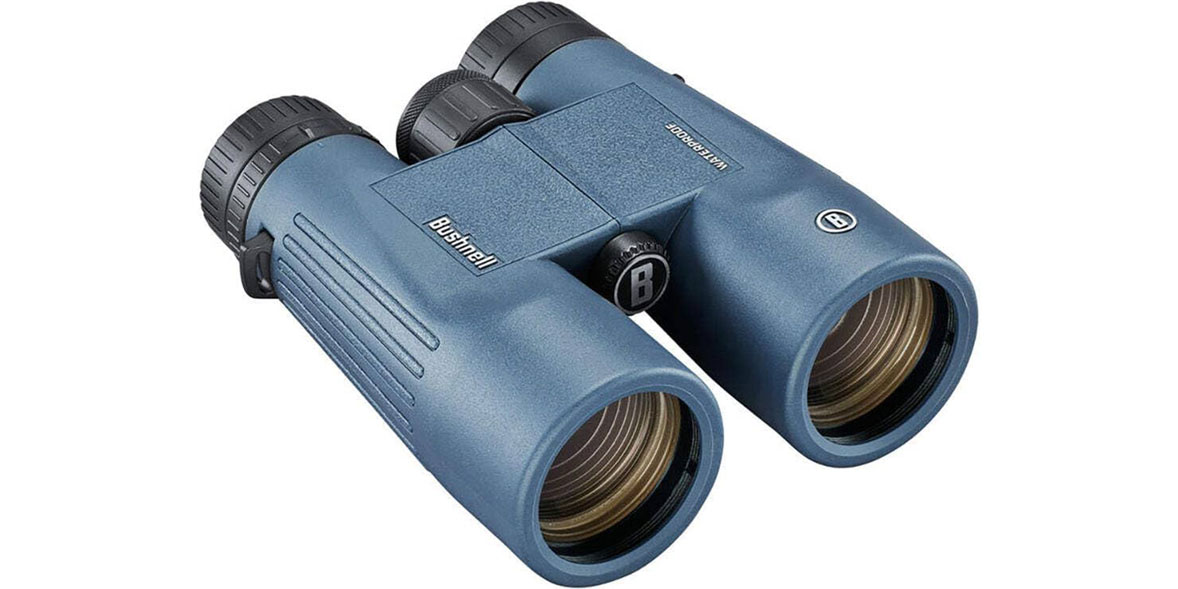
Most recently tested September 2025
Size and weight 11.3 x 15.4 x 6.5cm (HxWxD); 626g
Type Roof prism
Need to know 10x magnification, 42mm objective lens diameter, 3.6m close focusing distance, 101.3m field of view at 1,000m, 15.6mm eye relief, lens caps, neck strap, carry case and lens cleaning cloth included, tripod mountable, two-year warranty
Celestron Nature DX ED 12x50 Binoculars

Most recently tested September 2025
Size and weight 16.3 x 13.5 x 6.1cm (HxWxD); 806g
Type Roof prism
Need to know 12x magnification, 50mm objective lens diameter, 2.5m close focusing distance, 84m field of view at 1,000m, 14.3mm eye relief, lens caps, neck strap, carry case and lens-cleaning cloth included, tripod mountable, 10-year warranty
Hawke Vantage HD 8x42 Binoculars

Most recently tested September 2025
Size and weight 14.5 x 12.8 x 5.5cm (HxWxD); 595g
Type Roof prism
Need to know 8x magnification, 42mm objective lens diameter, 2m close focusing distance, 124m field of view at 1,000m, 17mm eye relief, lens caps, neck strap, carry case, drawstring bag and lens-cleaning cloth included, tripod mountable, two-year warranty
Leica 10x42 Trinovid HD Binoculars

Most recently tested September 2025
Size and weight 14 x 11.7 x 6.5cm (HxWxD); 730g
Type Roof prism
Need to know 10x magnification, 42mm objective lens diameter, 1.6m close focusing distance, 113m field of view at 1,000m, 15mm eye relief, lens caps, neck strap, carry case and lens-cleaning cloth included, tripod mountable, 10-year warranty
Nikon 10x25 Travelite EX Binoculars
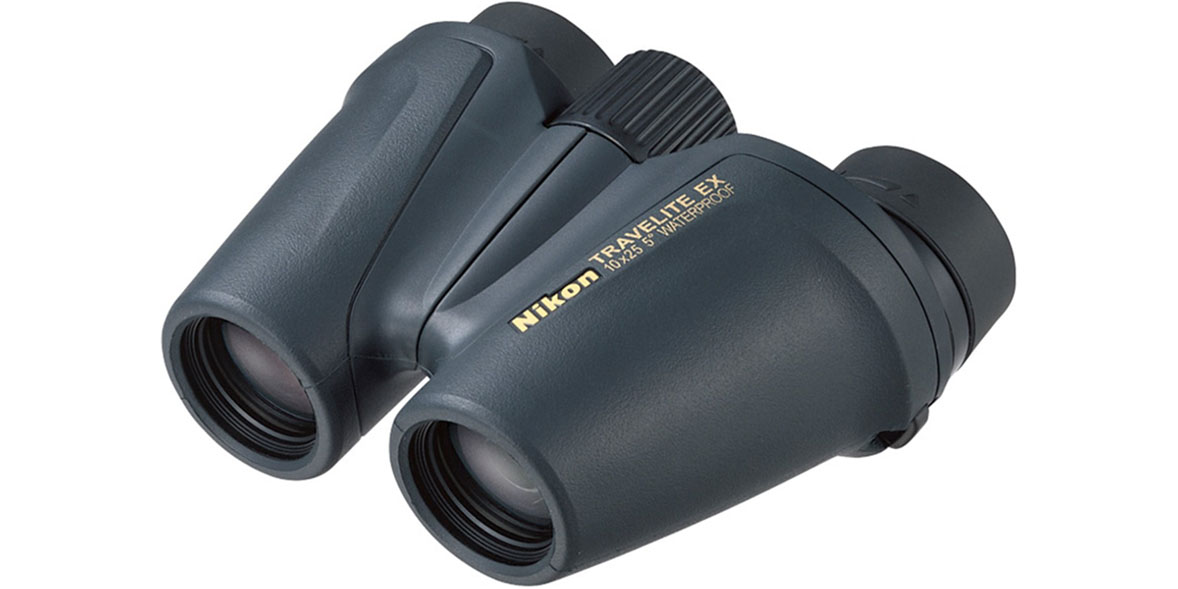
Most recently tested September 2025
Size and weight 11.6 x 10.2 x 5.3cm (HxWxD); 325g
Type Porro prism (mini centre focus)
Need to know 10x magnification, 25mm objective lens diameter, 2.8m close focusing distance, 87m field of view at 1,000m, 15.9mm eye relief, eyepiece lens caps, neck strap and carry case included, objective lens caps not included, not tripod mountable, 10-year warranty
Planning for a camping trip? See our round-up of the best tents
Opticron Oregon 4 PC Oasis 10x42 Binoculars
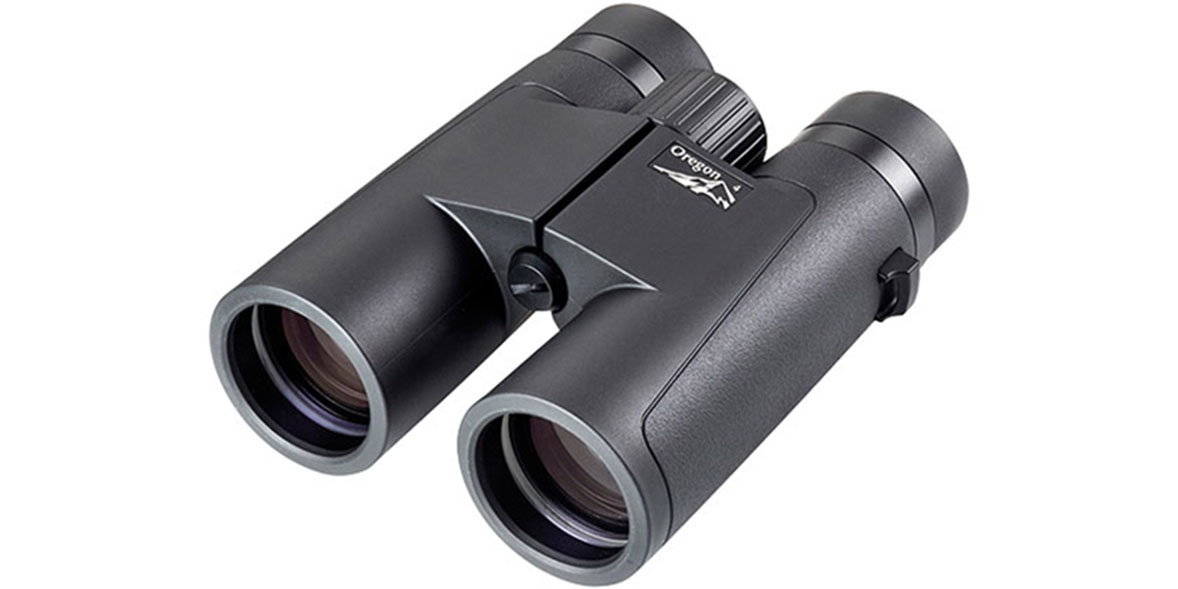
Most recently tested September 2025
Size and weight 14.7 x 12.5 x 5.2cm (HxWxD); 678g
Type Roof prism
Need to know 10x magnification, 42mm objective lens diameter, 2.3m close focusing distance, 105m field of view at 1,000m, 18mm eye relief, lens caps, neck strap, carry case and lens-cleaning cloth included, tripod mountable, five-year warranty
RSPB Skylark Binoculars 8x42
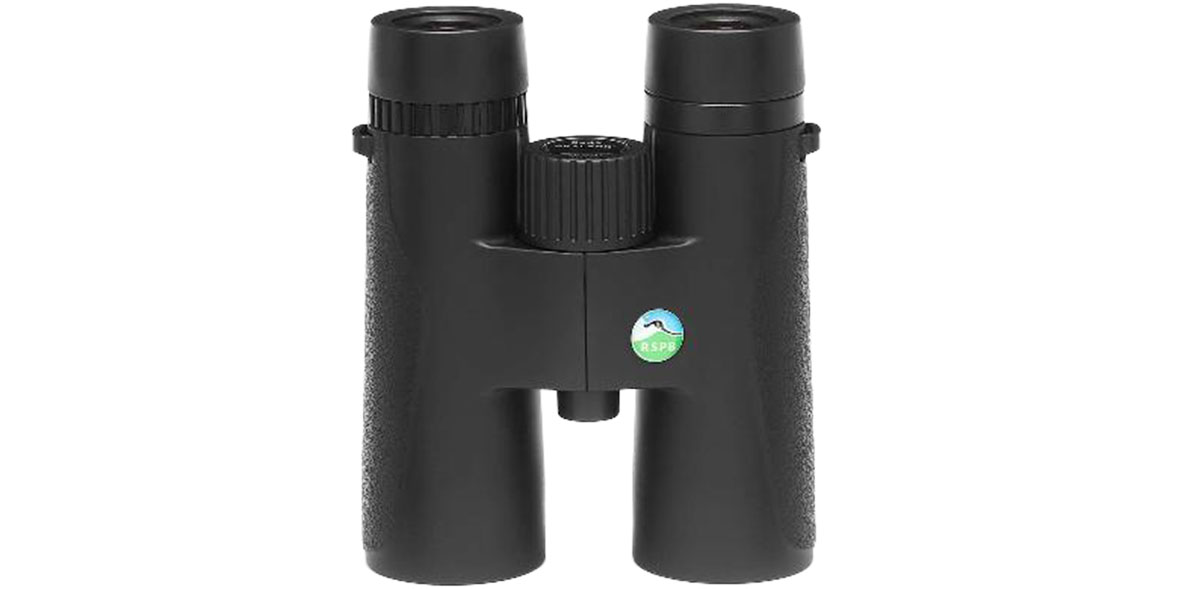
Available from RSPB (£100)
Most recently tested September 2025
Size and weight 12 x 15.5 x 5.5cm (HxWxD); 580g
Type Roof prism
Need to know 8x magnification, 42mm objective lens diameter, 4.5m close focusing distance, 108m field of view at 1,000m, 20.4mm eye relief, lens caps, neck strap and carry case included, not tripod mountable, one-year warranty
Swarovski EL 10x42 WB Swarovision Field Pro Binoculars

Most recently tested March 2024
Size and weight 16 x 13.1 x 6.1cm (HxWxD); 840g
Type Roof prism
Need to know 10x magnification, 42mm objective lens diameter, 3.3m close focusing distance, 112m field of view at 1,000m, 20mm eye relief, lens caps, neck strap, storage bag, lens-cleaning cloth, soap and cleaning brush included, tripod mountable, 10-year warranty
Vortex Diamondback HD 10x42 Binoculars

Most recently tested August 2022
Size and weight 14.5 x 13 x 7 (HxWxD); 605g
Type Roof prism
Need to know 10x magnification, 42mm objective lens diameter, 1.52m close focusing distance, 100.5m field of view at 1,000m, 15mm eye relief, lens caps, neck strap, carry case, chest harness and lens-cleaning cloth included, tripod-mountable, lifetime warranty
Zeiss Conquest HD 10x42 Binoculars

Most recently tested March 2024
Size and weight 15 x 12.8 x 5cm (HxWxD); 795g
Type Roof prism
Need to know 10x magnification, 42mm objective lens diameter, 2m close focusing distance, 115m field of view at 1,000m, 18mm eye relief, lens caps, neck strap, carry case and lens-cleaning cloth included, not tripod-mountable, two-year warranty
More binoculars from our tests
Here's the rest of the binoculars we've tested, listed in alphabetical order.
| Binoculars | Price | Score | Image quality | Ease of use | Closest focusing distance |
|---|---|---|---|---|---|
| Celestron Nature DX 10x42 Binoculars | SQUIRREL_TEXT_50012860 | ||||
| Kowa 10x25 SV II Compact Binoculars | SQUIRREL_TEXT_50022235 | ||||
| Nikon Prostaff P3 10x42 Binoculars | SQUIRREL_TEXT_50012857 | ||||
| Nikon Prostaff P7 10x42 Binoculars | SQUIRREL_TEXT_50011035 | ||||
| Olympus 8x40 S Binoculars | SQUIRREL_TEXT_12891296 | ||||
| Praktica Falcon 8x40 Binoculars | SQUIRREL_TEXT_50011039 | ||||
| RSPB Avocet 10x42 Binoculars | RSPB (£165), Viking Optical Centres (£165) | ||||
| Viking 10x42 Badger Binoculars | SQUIRREL_TEXT_50012855 | ||||
| Zeiss Terra ED 10x42 Binoculars | SQUIRREL_TEXT_50011042 |
Dates tested: September 2025, March 2024, August 2022. Page last checked: November 2025. We are not able to show every retailer and cheaper prices may be available.
How we test binoculars
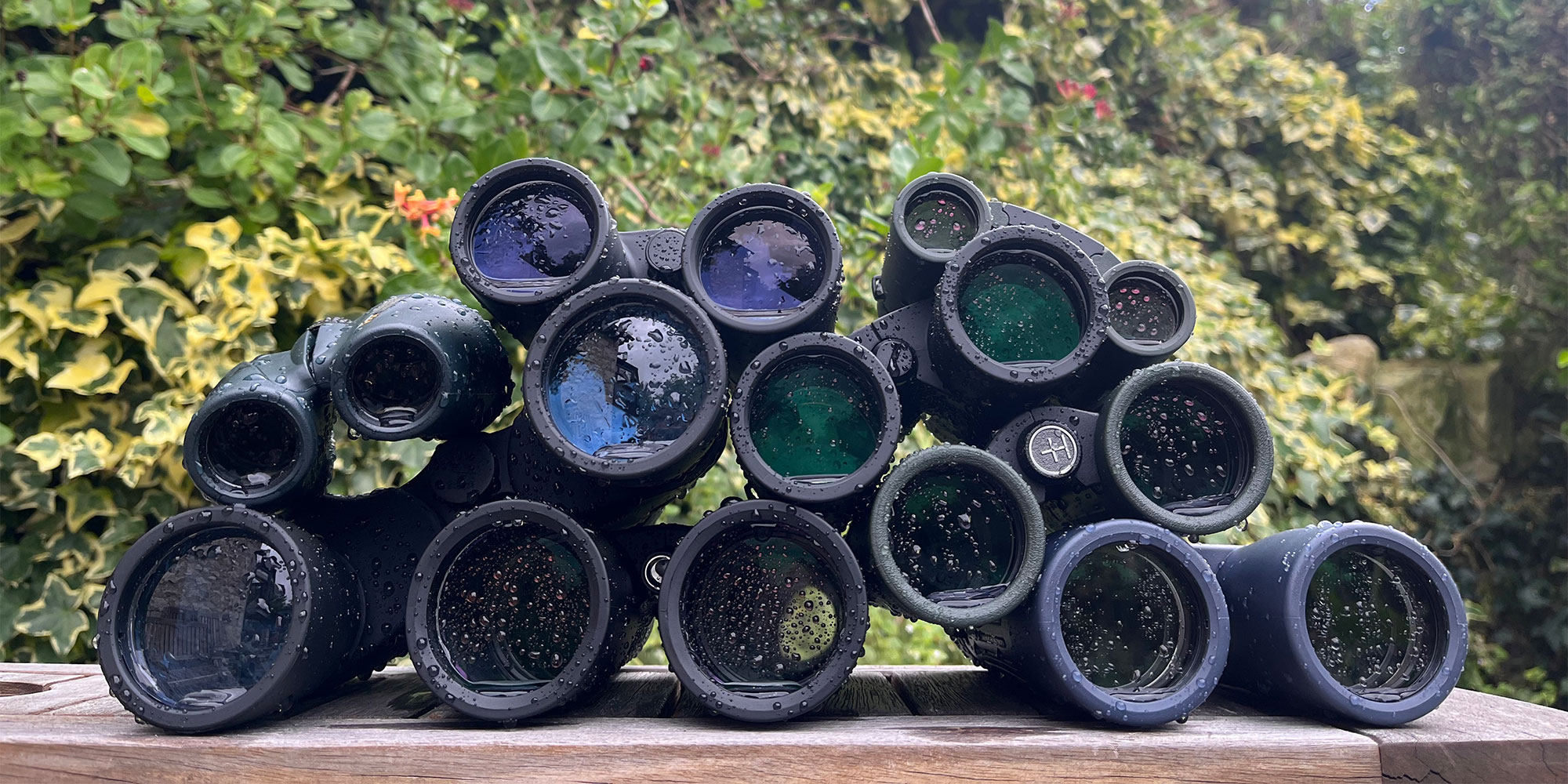
We select the bestselling binoculars from popular brands and retailers and put them through our tough tests.
Each pair of binoculars is used by a mixed panel of different ages and skill. The group includes hard-core bird watchers, as well as those new to the hobby, so we get a diverse set of views.
We regularly revisit the binoculars on sale to see if there are any more popular models that need testing, and when we find them, we do.
Ease of use
- We assess how easy it is to adjust and focus each pair of binoculars. Although some make it perfectly easy to adjust to your viewing needs, others are so poorly made that it's impossible to get a clear, consistent view.
- We judge how comfortable and secure they feel to hold, and how easily they can be used while wearing glasses with the eye cups in.
Image quality and brightness
- When spotting birds with the binoculars, testers judge each pair on how crisp and clear the image is, how comfortable they are with the brightness of the image, and how easily they are able to spot, track and view nature at near and far distances.
- The best binoculars for long distance give vivid detailed images, even in lower-light conditions. The worst present a dull, uninspiring picture with blurring and discoloration around the edges.
- We also try stargazing with the high-scoring binoculars, and those that are designed for stargazing, and comment where necessary. We don't factor this into our overall scoring, though, as our research has found Which? members are most interested in finding the best binoculars for bird watching.
Waterproofing and durability
- We subject each pair of binoculars to a heavy shower and check the lenses to see if any water gets inside.
- We check the binoculars for signs of structural weakness and stress-test their straps. Some straps and bags provide robust protection and comfortable padding, but some have loose threads and some straps even snap when they're given a sharp tug.
Why you can trust us: at Which? we're free from manufacturer and retailer influence. Find out more about our impartiality and how your support helps us to stay editorially independent.
Types of binoculars

There are two main types of design: roof prism and porro prism. Each type differs in the way the prisms channel light through the binoculars to your eyes. The shape of the binoculars helps you to tell these apart.
Roof prism binoculars
These have an H-shaped design, where the eyepiece and the binocular tubes are in a single straight line.
Roof prism binoculars are the more modern of the two types and tend to be more compact.
Expect to pay slightly more for the improved durability and lightweight design compared to Porro prism binoculars.

Porro prism binoculars
These have a traditional M-shaped design, where the eyepiece and the lens are not in line.
In the middle of the binoculars is a mechanism that can be turned to slightly alter the position of the tubes.
It used to be that Porro prism binoculars provided a clearer, sharper image than roof prism binoculars, but that's not really true any more.
These binoculars are also far bulkier than roof prism binoculars, so may be a burden to carry on a lengthy hike.

See also: How to buy the best telescope
What do the numbers on binoculars mean and what strength is best?

When someone talks about binoculars' numbers, they're referring to the level of magnification and the diameter of the objective lens. These affect how closely you can observe an image and how bright it will be, respectively.
The numbers are usually displayed on the side or central focusing wheel of the binoculars. The higher the numbers, the greater the magnification and brightness.
For example, 10 x 42 binoculars would magnify an image by 10 times, and the objective lens diameter would be 42mm, meaning it should produce a brighter image than if the lens were 25mm.
Brightness is not determined solely by the objective lens diameter, though – other factors, such as the materials the lens is made from and any coatings it has, will also have an impact.
The ideal strength of binoculars depends on what you want to use them for
- Bird watching, whale watching and other wildlife viewing A magnification of 8-10 and an objective lens diameter of 32-42mm is ideal.
- Star gazing and astronomy You can use a variety of magnification levels depending on how closely you want to view specific objects or take in a wider field of view. Anything from 7x to 25x can work well. You'll want wider objective lenses to gather more light if you want to see more objects in the night sky, though. 42mm and above is considered good.
- Hiking, sport and general use You'll probably want a pair of binoculars that are more compact and durable, so smaller magnifications of 6-8 and objective lens diameters of 25-28mm should be fine.
Want to watch wildlife in your garden? See the best plants for bees
What is field of view and what does it mean?

For binoculars, field of view describes how wide an area you can see through the binoculars. Sometimes it's written in degrees, but usually it's written as a number, referring to metres.
That number will be the width of the scene visible through the binoculars from 1,000 metres away. The greater the field of view, the wider the image you can see.
For example, a pair of binoculars with a field of view of 150 metres means that if you look at a spot that's 1,000 metres away, your view from one side to the other will be 150 metres wide.
Higher-magnification binoculars are more zoomed in and focus on a smaller area, so you'll have a tighter field of view when you look through them. This can make it trickier to keep objects in view, especially if they're on the move, such as birds.
Let nature flourish in your garden with our reviews of the best squirrel-proof bird feeders and the best bird nest boxes
Are monoculars better than binoculars?
In terms of how they're used and the technology inside them, there really isn't anything to split monoculars from binoculars. They do exactly the same thing, but with monoculars you look through one eyepiece rather than two.
However, the user experience is quite different. If you want something lightweight that you can quickly pull up to your eye to get a quick look, monoculars can be useful. They also can be less of a faff to use, as you don’t need to worry about spacing two lenses correctly between your eyes.
However, you only get a 2D image and, because it can be uncomfortable holding one eye shut for an extended time, you need to get used to having both eyes open but only really focusing on what the eye looking through the lens is seeing. Binoculars also have a much wider field of view and are much more immersive to use.
In our latest round of tests, our binoculars testing panel reviewed a couple of monoculars to see how they compare.
Only logged-in Which? members can view the monoculars test results.
Join Which? now to get instant access to our test results.
Opticron Oregon 4 PC Oasis 8x42 Monocular

Most recently tested September 2025
Size and weight 14.7 x 7.4 x 5.2cm (HxWxD); 343g
Type Monocular
Need to know 8x magnification, 42mm objective lens diameter, 1.8m close focusing distance, 123m field of view at 1,000m, 22mm eye relief, lens caps, neck strap and carry case included, not tripod mountable, five-year warranty
Viking 8×42 Cygnus Monocular
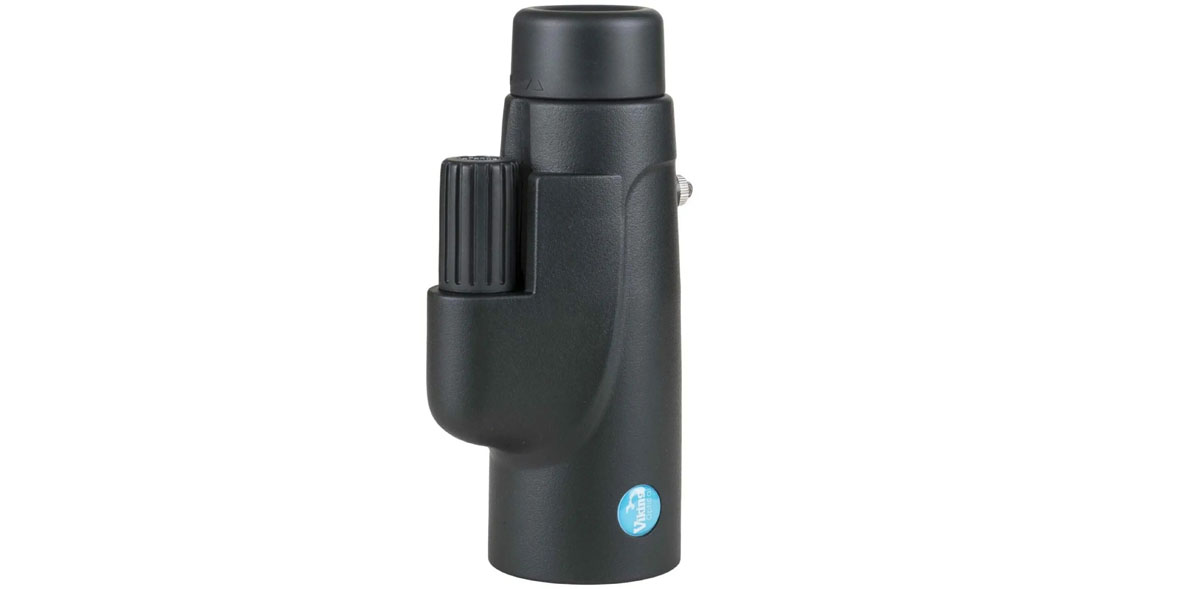
Most recently tested September 2025
Size and weight 15.5 x 8 x 3.5cm (HxWxD); 287g
Type Monocular
Need to know 8x magnification, 42mm objective lens diameter, 3m close focusing distance, 110m field of view at 1,000m, 18mm eye relief, lens caps, wrist strap and carry case included, tripod mountable, one-year warranty
See our reviews of the best solar garden lights
